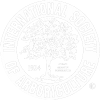Tree Relocation Aftercare
Recommended Tree Care after Planting
Transplanting is a major operation from which most trees recover slowly. A major portion of the root system is lost in digging, and the tree must reestablish sufficient roots to sustain itself. The tree’s ability to obtain and transport water and minerals is greatly reduced. Varying degrees of water stress is the result, and the tree experiences transplant shock.
Proper watering can be the key to the survival of newly planted trees
Site soil conditions will dictate the amount and frequency of watering. The goal is to keep the roots in the soil moist but not too wet to let the roots absorb oxygen. A slow gentle soaking is preferable. A good rule of thumb is to water the top of the root ball with a garden hose set at about half volume for approximately 60 minutes (or until runoff begins) after the initial installation. The water retention capacity of the soil should dictate future watering frequency. An indicator that the tree needs to be watered again is when the soil approximately 2 inches below grade is too dry to clump together in your hand. It is important to note that excess water accumulation in the planting hole is a leading cause of transplant death. Watering must be appropriate for soil type and drainage.
Generally, during spring, summer, and fall: If rainfall is not sufficient (1 inch/week), the tree should be watered every 10 days. In winter: If we experience a dry month, trees should be watered on a mild day. Evergreens require more water than deciduous trees.
Stakes should be used
Guy wires should be slack to force the tree’s roots to grow and eventually support it, but not slack enough to allow it to fall or lean. The staking system should be checked periodically to ensure it is not injuring the tree. Stakes should be removed after one or more growing seasons, depending on the size of the tree and the soil conditions. If support systems are left in place too long, the tree’s ability to stand alone may be reduced, and the chances of girdling injury are increased.
Wait to fertilize
Since the root system of a newly planted tree is limited, fertilization is often not recommended at the time of planting. Excessive fertilizer salts in the root zone can be damaging. If fertilizer is used at planting or in the first growing season, the application of a controlled-release fertilizer is suggested. Fertilization in the fall when the roots are active can be beneficial.
Mulching
The area around the tree should be mulched with three to four inches of organic mulch. The mulch will help reduce competition from weeds and grasses, conserve soil moisture and moderate soil temperature extremes. The mulch should not be placed against the trunk of the tree as that can cause bark suffocation or crown rot. Black plastic should not be placed under the mulch since it restricts water movement and oxygen availability to the roots.
Pruning following planting should be limited
The tree will grow and establish most rapidly if pruning is minimized at planting. Broken or damaged limbs should be removed.
Do not use tree wrap
Many early references recommend wrapping the trunks of newly planted trees to protect against temperature extremes, sun-scald, boring insects, and drying. More recent research indicates that temperature differentials at the bark are more significant with tree wrap than without it. Further, tree wrap tends to hold moisture on the bark and can lead to fungal problems. Also, insects tend to burrow between the bark and the wrap and can be worse with wrap than without it.






 Get An Estimate
Get An Estimate